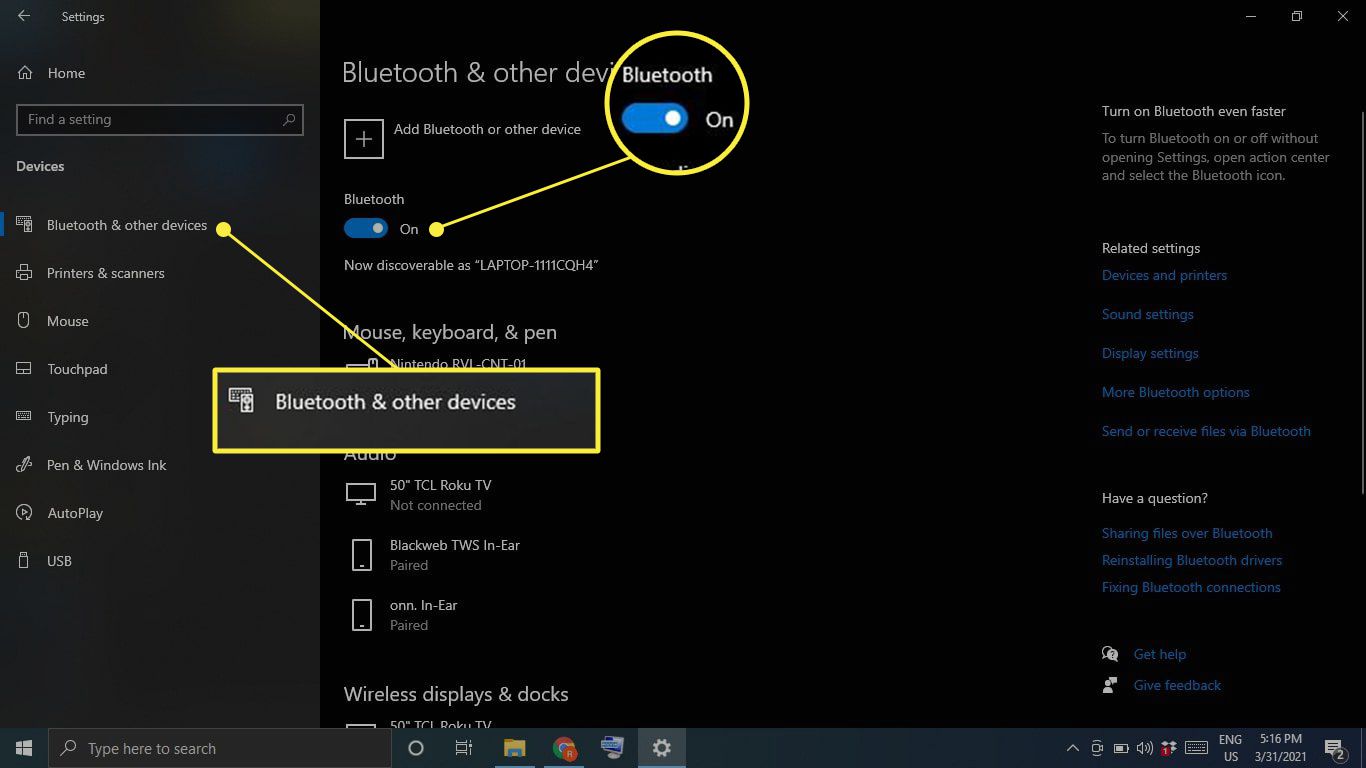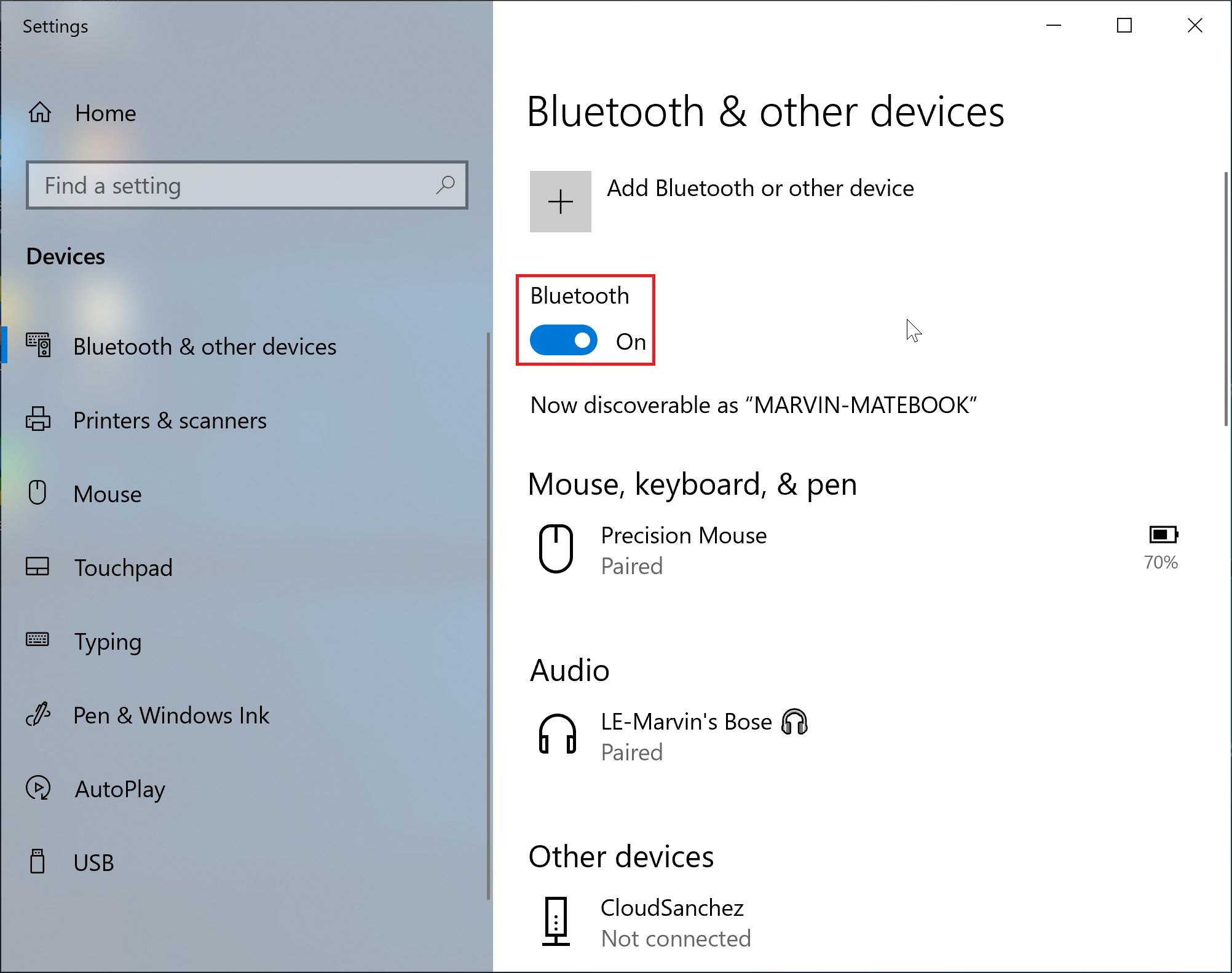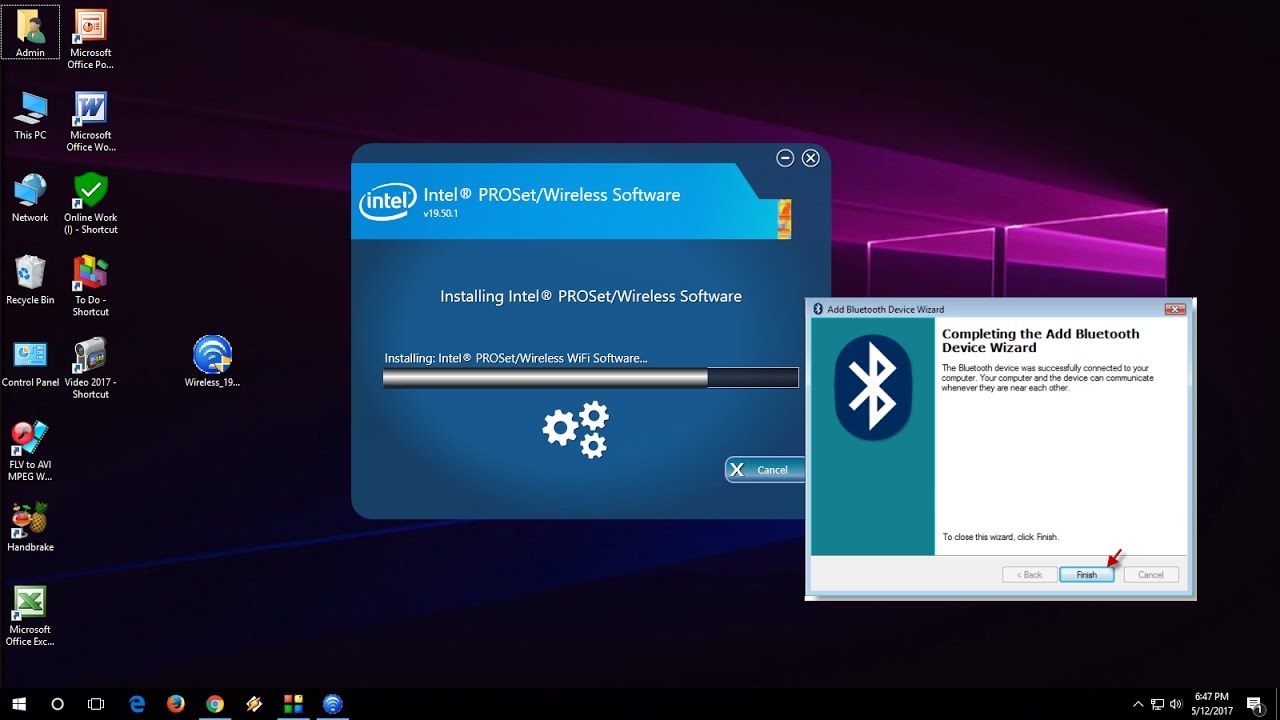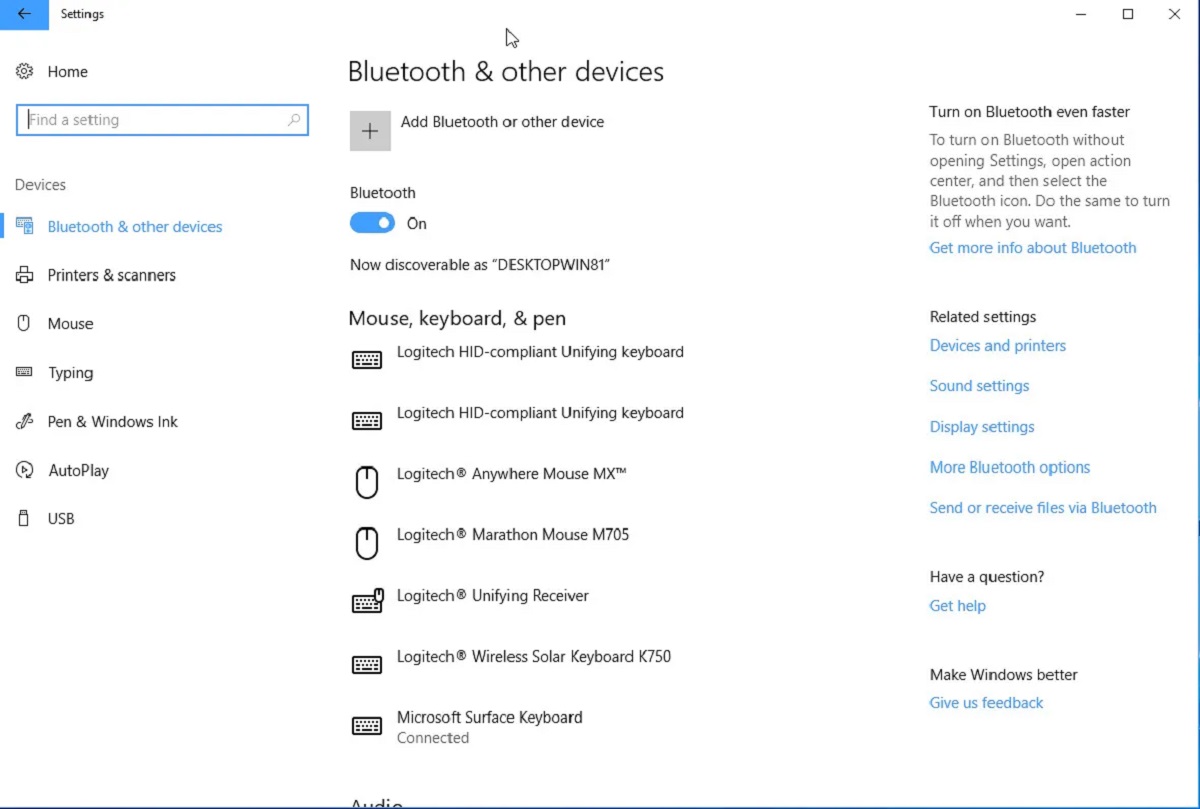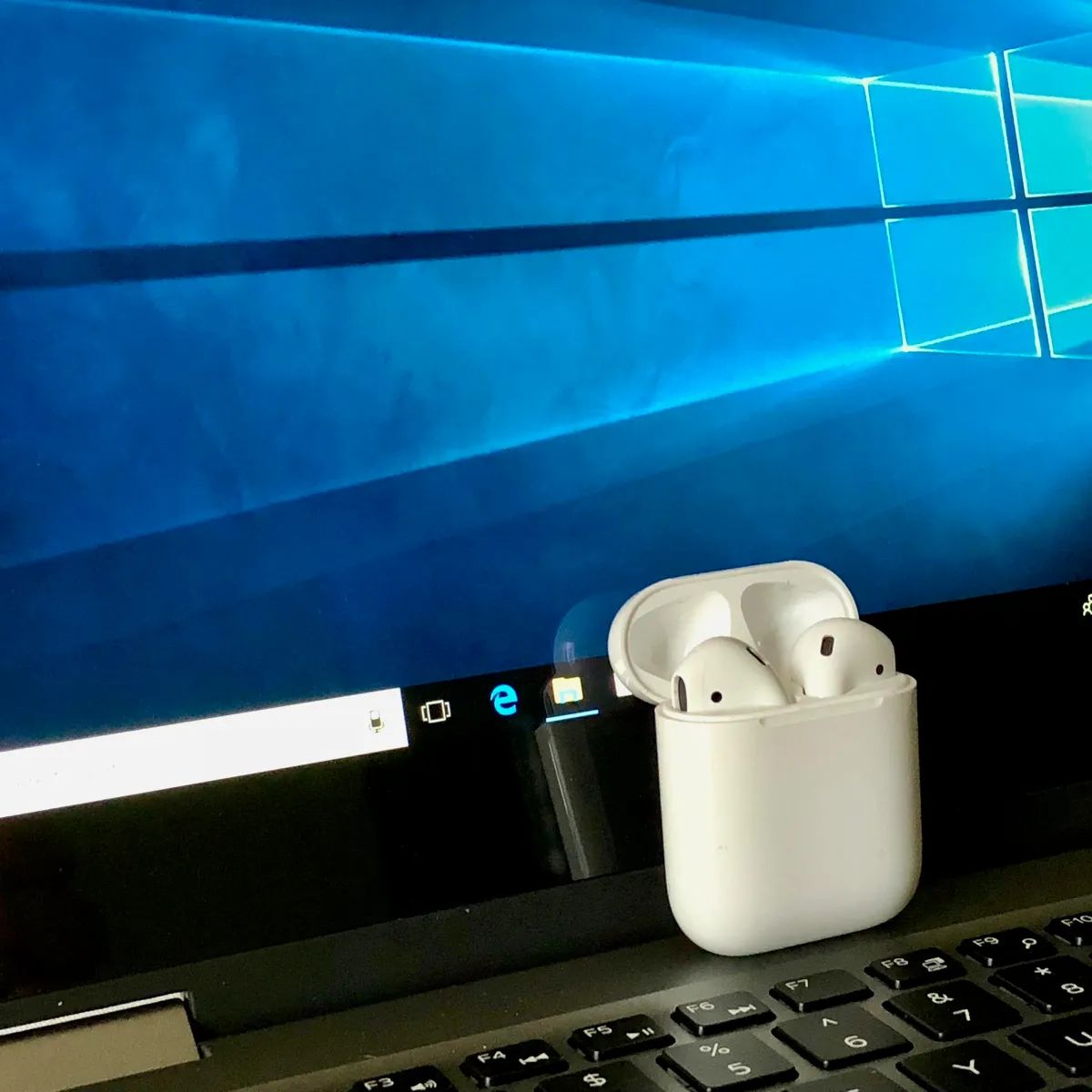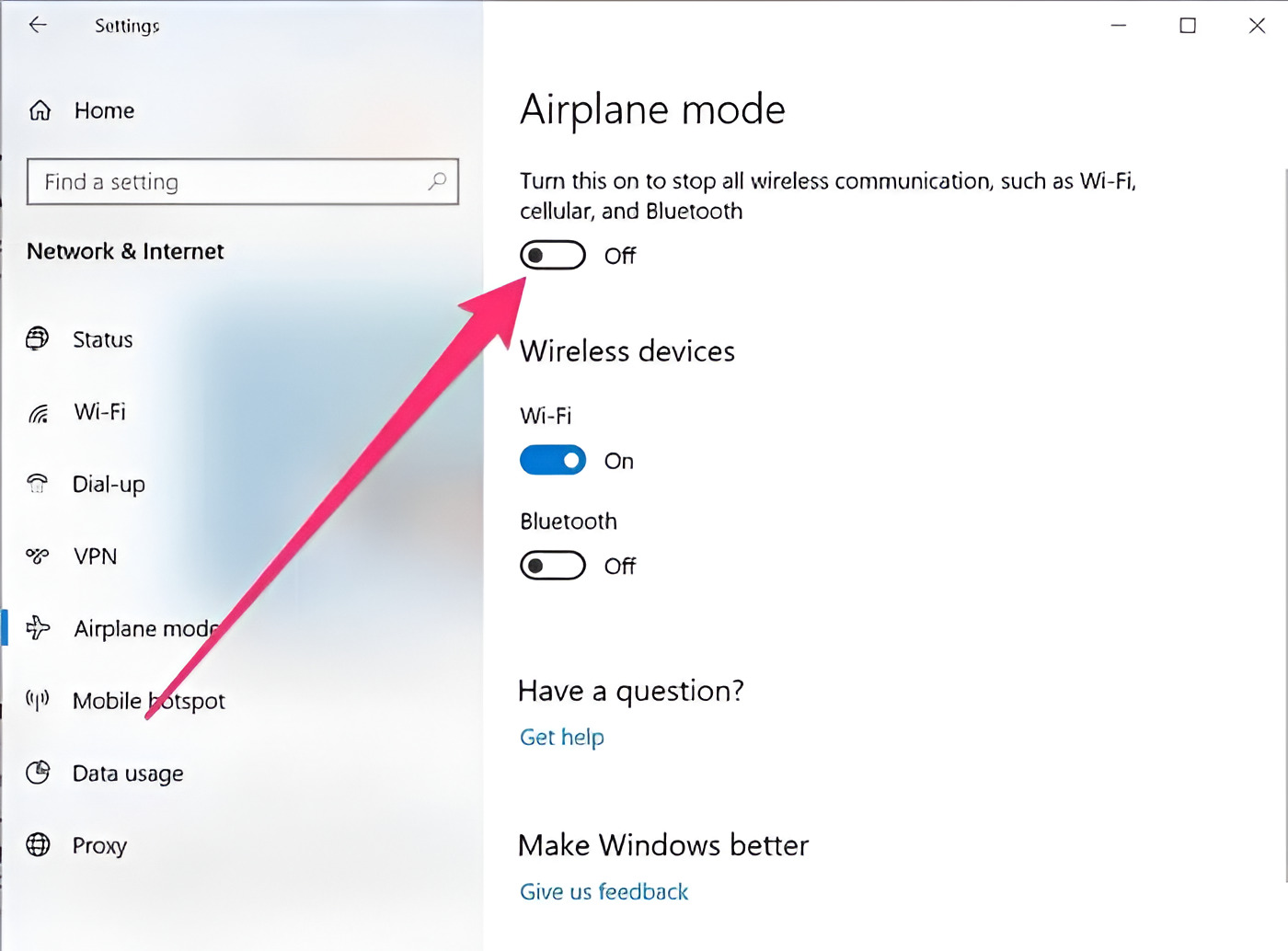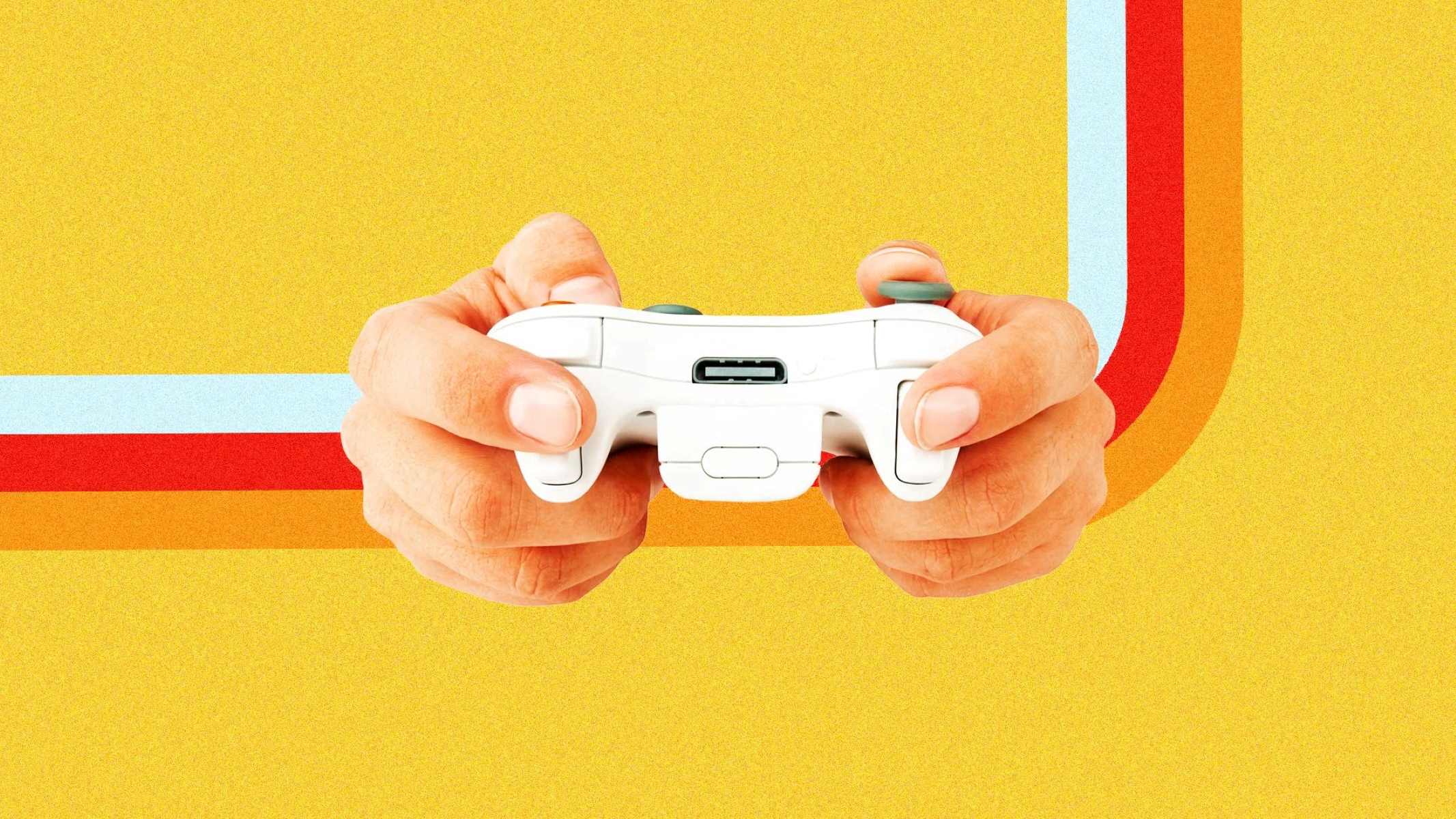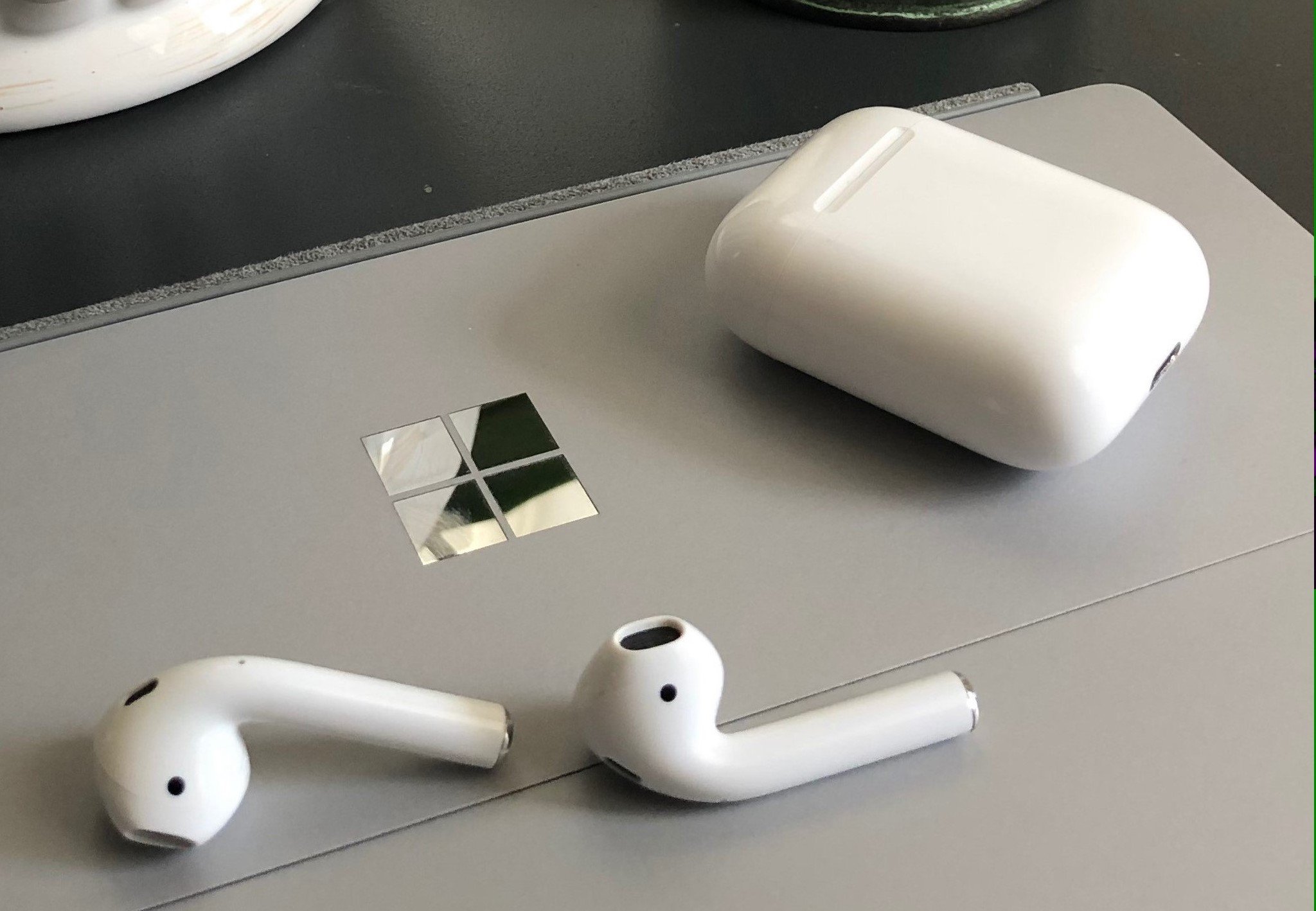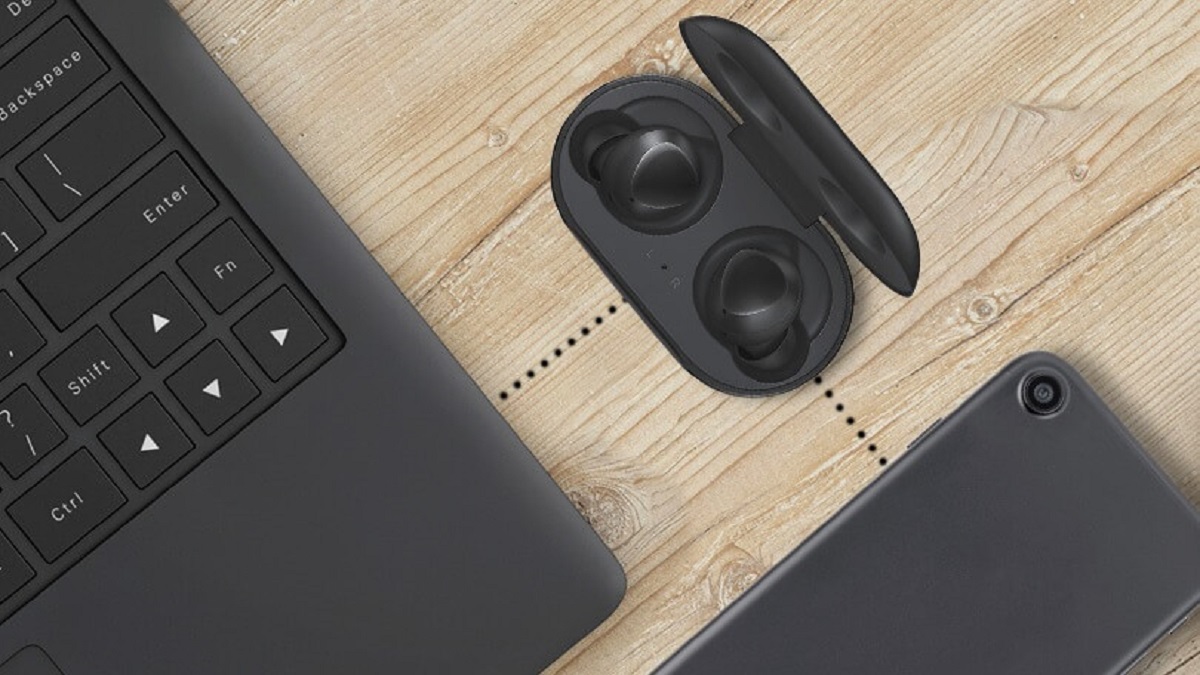Introduction
Welcome to our guide on how to turn on Bluetooth in Windows 10. Bluetooth technology has become an essential feature for connecting various devices wirelessly, whether it’s a headset, mouse, keyboard, or smartphone. Having Bluetooth functionality enabled on your Windows 10 computer can enhance your productivity and convenience, allowing you to easily transfer files, stream audio, and connect to external devices without the hassle of cables.
Bluetooth is a short-range wireless communication technology that uses radio waves to establish a connection between devices. It operates on the 2.4 GHz frequency band and allows for data transmission over distances of up to 100 meters, depending on the specific devices involved.
In this guide, we will explore three different methods to help you turn on Bluetooth in Windows 10. Whether you prefer using the Action Center, the Settings app, or the Control Panel, we have got you covered. Additionally, we will provide troubleshooting tips to help you overcome common Bluetooth issues that may arise.
Before we dive into the methods, it’s crucial to ensure that your Windows 10 device is equipped with Bluetooth capabilities. Most modern laptops, tablets, and desktop computers come with built-in Bluetooth functionality. However, if your device doesn’t have a built-in Bluetooth adapter, you can purchase an external Bluetooth USB dongle to add Bluetooth support.
Now that we have a basic understanding of Bluetooth technology and the requirements let’s proceed to the different methods of turning on Bluetooth on your Windows 10 computer. Whether you are a tech-savvy user or new to the Windows 10 operating system, we have simplified the steps to make it easy for everyone to follow along.
Now let’s jump into the first method, using the Action Center.
Method 1: Using the Action Center
The Action Center is a convenient and accessible feature in Windows 10 that provides quick access to various system settings, including Bluetooth. Here’s how you can use the Action Center to turn on Bluetooth:
- Click on the Action Center icon located at the bottom right corner of your Windows 10 taskbar. You can also press the Windows key + A to open the Action Center.
- In the Action Center, you’ll find a row of icons representing different settings. Look for the Bluetooth icon, which resembles a capital letter “B”. If the Bluetooth icon is not visible, click on the Expand option to reveal additional settings.
- Click on the Bluetooth icon to toggle the Bluetooth functionality on or off. If the Bluetooth icon appears highlighted, it means that Bluetooth is turned on. If not, click on the icon once to enable Bluetooth.
Congratulations! You have successfully turned on Bluetooth using the Action Center in Windows 10. You can now connect your Bluetooth devices and enjoy wireless connectivity.
Note that the availability and visibility of the Bluetooth icon in the Action Center depend on your device’s hardware and drivers. If the Bluetooth icon is not present or not functioning properly, you can try the alternate methods we will discuss next.
Now, let’s move on to method two, which involves using the Settings app to turn on Bluetooth.
Method 2: Using the Settings App
If you prefer more comprehensive control over your system settings, you can use the Settings app in Windows 10 to turn on Bluetooth. Here’s how to do it:
- Open the Start menu by clicking on the Windows icon located at the bottom left corner of your screen. Alternatively, you can press the Windows key on your keyboard.
- Click on the Settings icon, which resembles a small gear. The Settings app will open.
- In the Settings app, click on the Devices option. This will open the Devices settings menu.
- On the left-hand panel of the Devices settings menu, click on Bluetooth & other devices.
- In the right-hand panel, you will find the Bluetooth toggle switch. Click on the switch to turn on Bluetooth. If the switch turns blue, it means Bluetooth is enabled.
Great job! You have successfully turned on Bluetooth using the Settings app in Windows 10. You can now start pairing and connecting your Bluetooth devices.
If you encounter any issues or if the Bluetooth toggle switch is greyed out or missing, it indicates that there might be a problem with your device’s drivers or Bluetooth hardware. In such cases, using the Control Panel may help resolve the issue, which we will discuss in the next section.
Now, let’s move on to method three, which involves turning on Bluetooth using the Control Panel.
Method 3: Using the Control Panel
If you’re facing issues with the Action Center or the Settings app, you can turn on Bluetooth using the Control Panel in Windows 10. Follow these steps:
- Press the Windows key + R on your keyboard to open the Run dialog box.
- Type control and click on the OK button. This will open the Control Panel.
- In the Control Panel, click on the Hardware and Sound option.
- Under the Devices and Printers section, click on Device Manager.
- In Device Manager, expand the Bluetooth category by clicking on the arrow next to it. If you don’t see the Bluetooth category, it means that your device doesn’t have a Bluetooth adapter installed.
- Right-click on the Bluetooth adapter listed and select Enable. This will turn on Bluetooth on your Windows 10 computer.
Excellent work! You have successfully turned on Bluetooth using the Control Panel in Windows 10. Now you can connect your Bluetooth devices and enjoy seamless wireless connectivity.
If the Bluetooth category doesn’t appear in Device Manager or if the Enable option is grayed out, it usually indicates a driver or hardware issue. You may need to update your Bluetooth drivers or troubleshoot any hardware problems to resolve the issue. Checking the manufacturer’s website for driver updates or consulting technical support can be helpful in such situations.
Now that we have explored three different methods to turn on Bluetooth in Windows 10, it’s essential to address any potential issues you might encounter with Bluetooth connectivity. Let’s proceed to the next section, where we will provide troubleshooting tips for common Bluetooth problems.
Troubleshooting Bluetooth Issues
While Bluetooth technology is generally reliable, there are instances where you may encounter issues with connectivity or functionality. Here are some troubleshooting tips to help you resolve common Bluetooth problems:
- Restart your device: Sometimes, a simple restart can fix temporary Bluetooth issues. Restart your Windows 10 computer and try connecting your Bluetooth device again.
- Check Bluetooth compatibility: Ensure that the device you are trying to connect is compatible with Bluetooth and compatible with your Windows 10 computer. Check the manufacturer’s specifications for compatibility information.
- Update Bluetooth drivers: Outdated or corrupt Bluetooth drivers can cause connectivity problems. Visit the manufacturer’s website or use the Device Manager to update your Bluetooth drivers.
- Enable discovery mode: Some Bluetooth devices require you to put them in discovery mode before they can be detected by your computer. Refer to the device’s user manual for instructions on how to enable discovery mode.
- Remove and re-pair devices: If you are having trouble connecting a Bluetooth device, try removing it from your computer’s list of paired devices and then re-pairing it.
- Check for interference: Bluetooth signals can be affected by interference from other electronic devices or Wi-Fi networks. Keep your Bluetooth devices away from such sources of interference.
- Check Bluetooth settings: Ensure that the appropriate Bluetooth settings are enabled in your Windows 10 computer. Check the Bluetooth toggle switch in the Action Center or the Settings app.
- Reset Bluetooth settings: If you are still experiencing issues, you can try resetting the Bluetooth settings on your computer. Go to the Settings app, click on Devices, then select Bluetooth & other devices. Under the More Bluetooth options section, click on the Reset button.
By following these troubleshooting tips, you should be able to resolve most Bluetooth issues on your Windows 10 computer. However, if the problem persists, it may be worth contacting the device manufacturer’s support team for further assistance.
Now that we have covered methods to turn on Bluetooth and troubleshooting tips, you should have a good understanding of how to handle Bluetooth-related issues in Windows 10. Whether you are connecting a wireless keyboard, a Bluetooth headset, or transferring files between devices, Bluetooth provides a convenient and wireless solution for your connectivity needs.
Conclusion
In conclusion, turning on Bluetooth in Windows 10 is a straightforward process that can be accomplished using various methods. Whether you prefer using the Action Center, the Settings app, or the Control Panel, you have the flexibility to enable Bluetooth based on your preferences and needs.
We started by introducing Bluetooth technology and its benefits in enhancing wireless connectivity between devices. We then delved into the three methods of turning on Bluetooth:
- Using the Action Center, a convenient feature that allows you to toggle Bluetooth on or off with a simple click.
- Using the Settings app, which provides more comprehensive control over your Windows 10 system settings, including Bluetooth.
- Using the Control Panel to enable Bluetooth, particularly if you encounter issues with the other methods or need more advanced troubleshooting options.
Additionally, we provided troubleshooting tips for common Bluetooth problems, such as restarting your device, updating drivers, and checking for compatibility issues. By following these tips, you can address and resolve connectivity issues that may arise.
Remember, Bluetooth provides a convenient and wireless solution for connecting various devices to your Windows 10 computer. Whether you are using Bluetooth headphones for a hands-free audio experience, a Bluetooth mouse for improved productivity, or transferring files between devices, the ability to enable Bluetooth can greatly enhance your computing experience.
Now that you have a thorough understanding of how to turn on Bluetooth and troubleshoot common issues in Windows 10, you can confidently connect your Bluetooth devices and enjoy the benefits of seamless wireless connectivity.
Thank you for reading, and we hope this guide has been helpful in your quest to enable Bluetooth on your Windows 10 computer!







